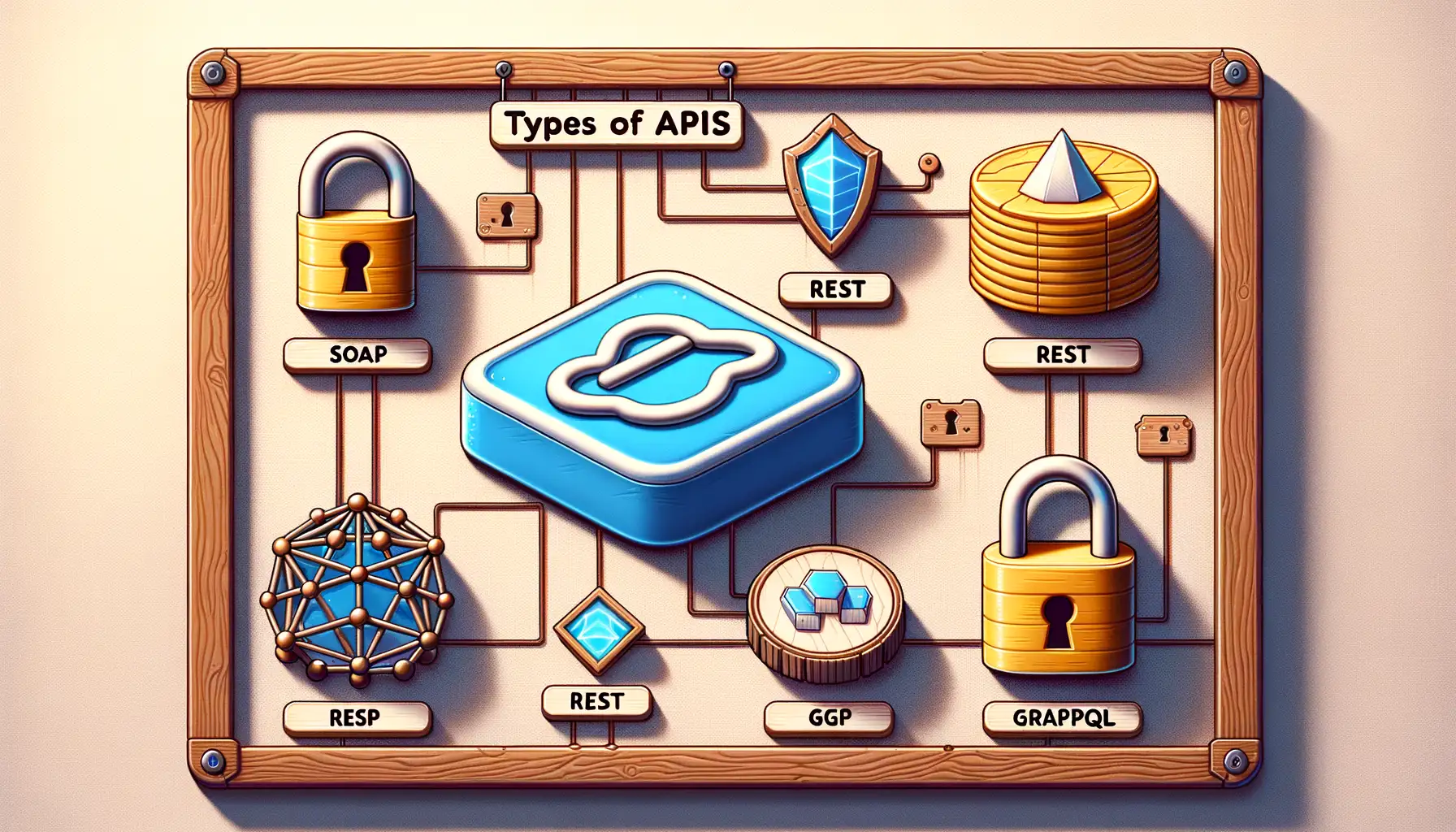Understanding APIs and Their Importance
What Exactly Are APIs? Let’s Demystify
Imagine APIs as the invisible waiters of the digital world. You sit at a table (your app), and instead of heading to the kitchen yourself (the server), you simply place your order with a friendly waiter – that’s the API in action. An API, or Application Programming Interface, acts as a bridge, carrying requests from one system to another and delivering the results back to you.
Without APIs, our favorite apps would be like deserted islands, completely cut off from the mainland of services they depend on. APIs connect weather apps to meteorological databases, your smart fridge to recipe sites, and even enable smooth online payments. It’s no exaggeration to say APIs are the secret sauce behind much of modern tech.
Why Should Developers Care About APIs?
Picture this: you’re designing a mobile app, and you want users to log in with their Google account. Do you build the entire authentication system from scratch? Of course not! With APIs, you borrow Google’s secure login system, saving time and reducing headaches.
Here’s why APIs matter:
- Speed: They accelerate development by letting you plug into pre-existing solutions.
- Scalability: Relying on APIs means you can focus on improving your own app instead of reinventing wheels.
- Flexibility: APIs let apps talk to each other seamlessly, creating richer user experiences.
Developers who understand how to wield APIs effectively don’t just build apps – they craft ecosystems.
How APIs Enhance Modern Web Development

Fueling Seamless Connections Across the Web
Imagine web development as a bustling city. APIs are the bridges, tunnels, and traffic lights that keep everything flowing smoothly. They allow different systems to “talk” to each other—and not just in monotone exchanges, but in full-on conversations that make websites dynamic and intelligent. Without APIs, your favorite apps would be lonely islands, unable to share data or functionality with others.
Take, for example, booking a flight online. The website you visit isn’t storing all the airlines’ information itself—it’s calling on an API, grabbing live data straight from the airline’s database, and presenting it to you in seconds. That’s the magic of real-time interaction.
- They enable developers to integrate third-party services, like payment gateways or mapping tools, without reinventing the wheel.
- They speed up development time by offering pre-built solutions.
- They’re the reason apps feel personalized, syncing your preferences across devices instantly.
The Superpower Behind Modern UX
Think about how Spotify lets you log in with your Google account, or how weather apps pull data from meteorological services. This isn’t guesswork—this is the brilliance of API integration. APIs break barriers between platforms, creating that delightful user experience where things “just work.”
Types of APIs in Web Development

Exploring Different API Flavors
APIs are like digital matchmakers, connecting data and functionality across apps and systems. But did you know not all APIs play by the same rules? They come in various “flavors,” each tailored to specific needs, much like choosing a coffee blend to match your mood. Let’s dive into some of the popular ones.
- REST APIs: These are the rockstars of the API world, known for their simplicity and scalability. Think of them as sending postcards—you make a request (write the postcard), send it off, and wait for the reply (your response). REST is perfect for web services that need to be lightweight yet powerful.
- GraphQL APIs: Imagine going to an all-you-can-eat buffet, but instead of being overwhelmed with options, you’re handed just what you asked for. That’s GraphQL—it’s precise, efficient, and incredibly satisfying when dealing with complex data.
- SOAP APIs: A bit of an old-school type, but still reliable. These heavily structured APIs are like signing legal contracts—they follow strict rules and ensure everything is crystal clear.
The Unsung Heroes: Other API Types
While REST and GraphQL hog the spotlight, there are other players worth mentioning. WebSocket APIs, for instance, are like having a hotline for real-time communication—perfect for chat apps or live data streams. Then there are Open APIs, freely available for developers to tinker with, like open-source playgrounds for creative minds.
No matter the type, APIs are the secret sauce behind seamless digital experiences. Choose wisely, and they’ll make your life—and codebase—a whole lot easier.
Best Practices for API Integration

Building Bridges: Laying a Solid Foundation for API Integration
Let’s face it—API integration can feel overwhelming, like trying to assemble a 1,000-piece puzzle without the picture on the box. But with the right strategies, you’ll turn that chaos into a seamless connection that makes your web development shine. So, where do you start?
First, always read the API documentation. Think of it as your treasure map: the clearer it is, the easier your journey becomes. Skipping over this step is like diving into the deep end without knowing how to swim—it’s messy and avoidable. While you’re at it, look out for rate limits, authentication methods, and potential pitfalls.
Here’s a quick checklist to guide you:
- Test in isolated environments first: Don’t experiment directly on your live systems. It’s like practicing a new recipe—better to mess up in your test kitchen than during a dinner party.
- Use versioning: APIs evolve. Pinning your integration to a specific version ensures updates don’t break your application.
- Implement retries smartly: If an API call fails, a thoughtful retry mechanism avoids frustrating users with unnecessary delays.
Security and Performance: The Heartbeat of API Integration
Never underestimate the importance of security when integrating APIs. Imagine opening the doors to your house—you wouldn’t leave them wide open for strangers, would you? Ensure you use HTTPS, secure tokens, and keep sensitive data encrypted. As for keys, treat them like your car keys. Never expose them to the public (yes, I mean GitHub).
And let’s talk performance. Nobody enjoys waiting ages for an app to load. Cache responses where appropriate and optimize API calls to reduce unnecessary requests. Think of it as tidying up your workbench so you’re not tripping over tools when trying to build something beautiful.
By approaching API integration like a master craftsperson—meticulous, secure, and creative—you’ll create connections that hum with efficiency and elegance.
Future Trends in API Usage

The API Revolution: What’s Coming Next?
The world of APIs is evolving at warp speed. If you think API usage has already peaked, buckle up, because the future looks like a sci-fi movie coming to life. One major trend we’re seeing is the rise of AI-powered APIs. Imagine APIs that don’t just send or receive data but learn, predict, and adapt over time. For instance, developers could soon rely on APIs that dynamically enhance user experiences—think voice assistants that understand context better or recommendation systems that feel uncannily personal.
Emerging Forces Shaping API Development
Let’s talk about the groundbreaking shifts shaping the way APIs are built and used:
- Hyper-automation: APIs will increasingly enable automated workflows between apps, cutting down repetitive tasks like a digital butler. Zapier, anyone?
- Low/No-code API integrations: Got no coding skills? No problem! Tools and APIs are being crafted to empower “citizen developers” to create seamless integrations without writing a single line of code.
- API Mesh Architectures: Forget one-offs; networks of APIs will work together for holistic functionality. Imagine piecing APIs like LEGO bricks!
The future is not just exciting—it’s a playground for dreamers and doers. The question is, how will you harness it?

